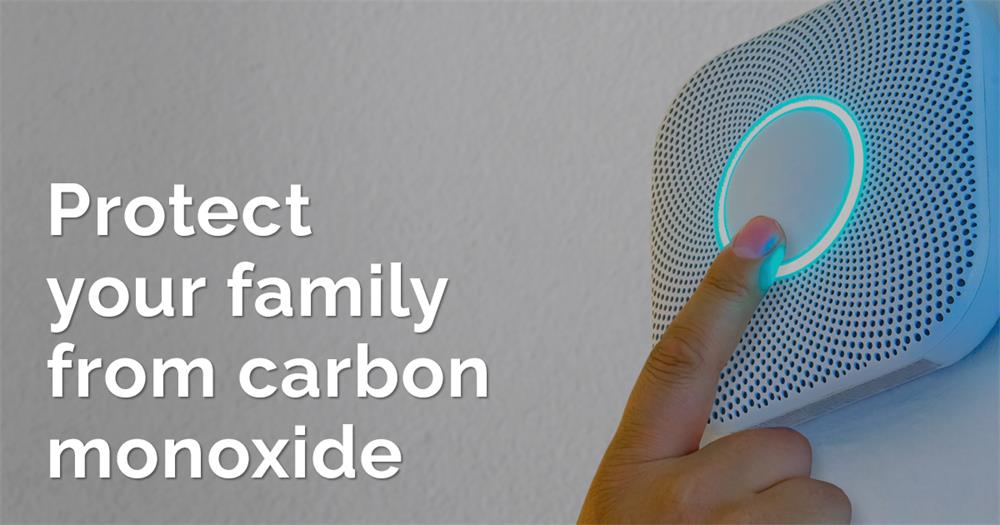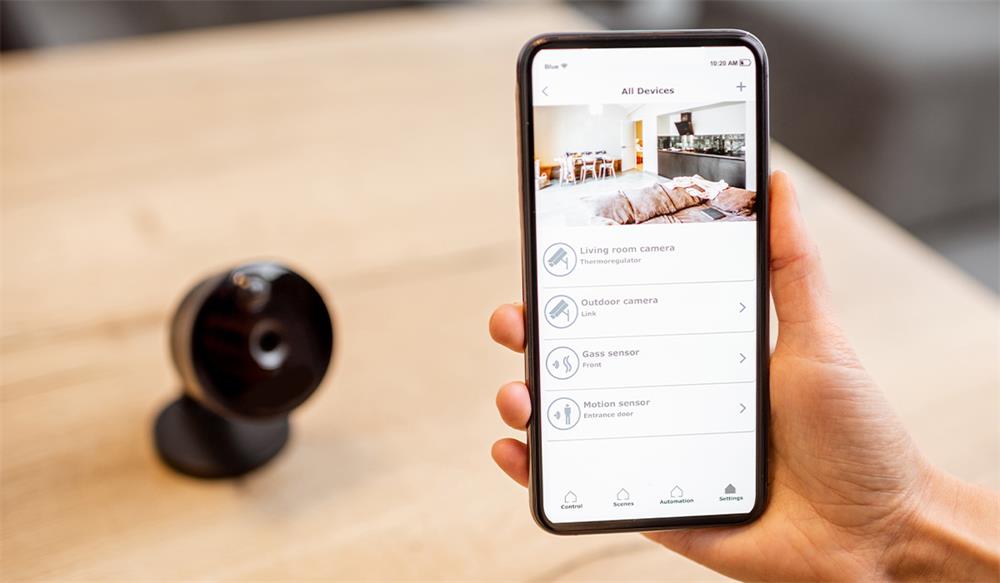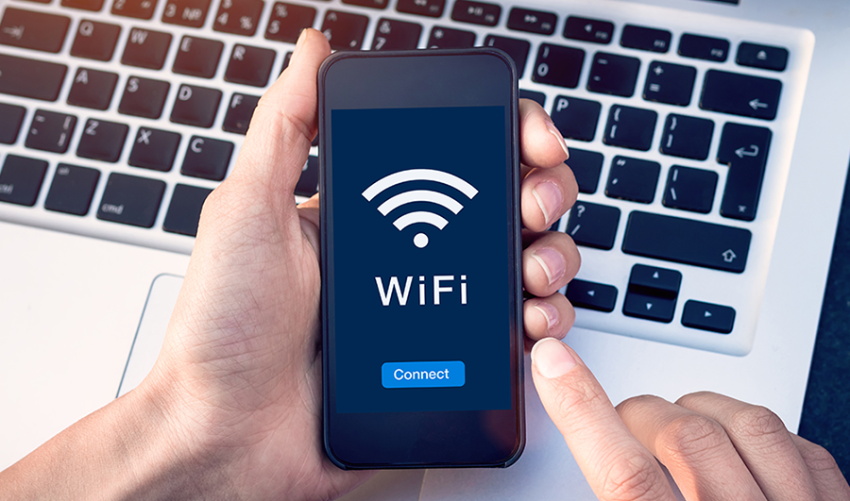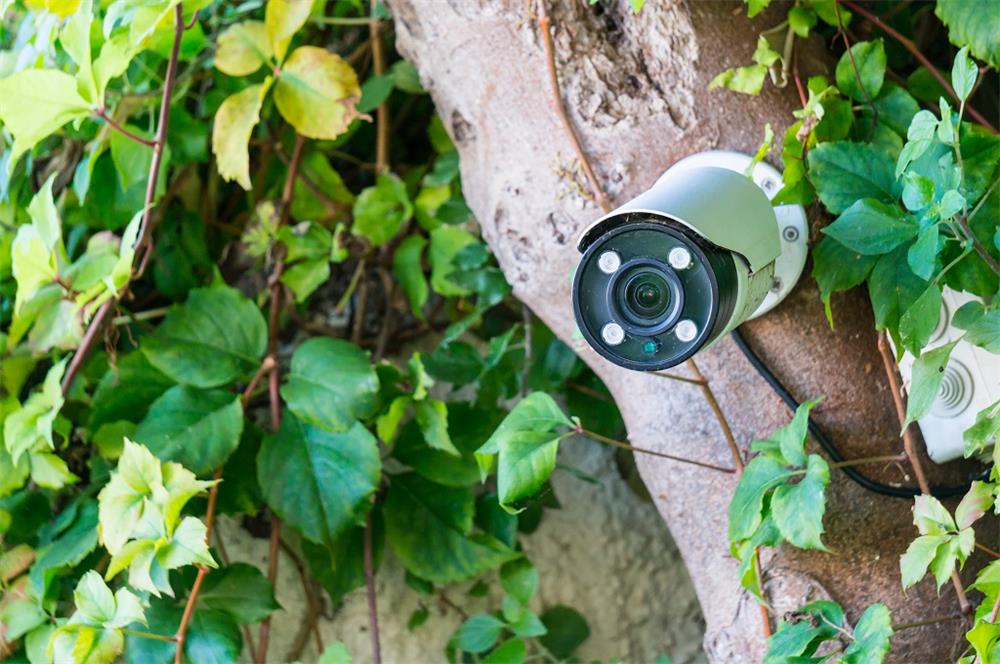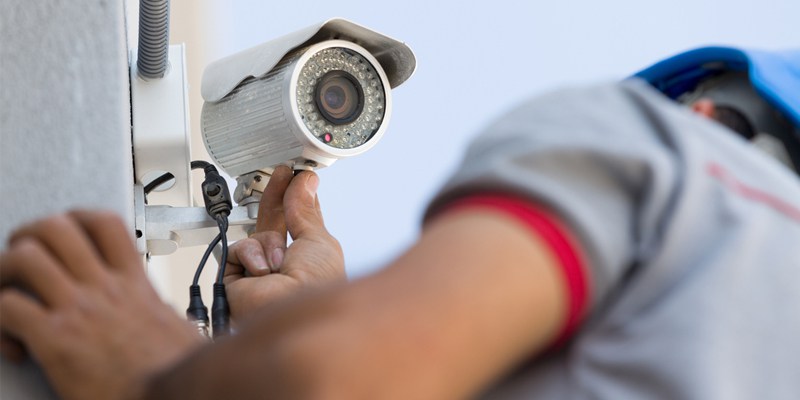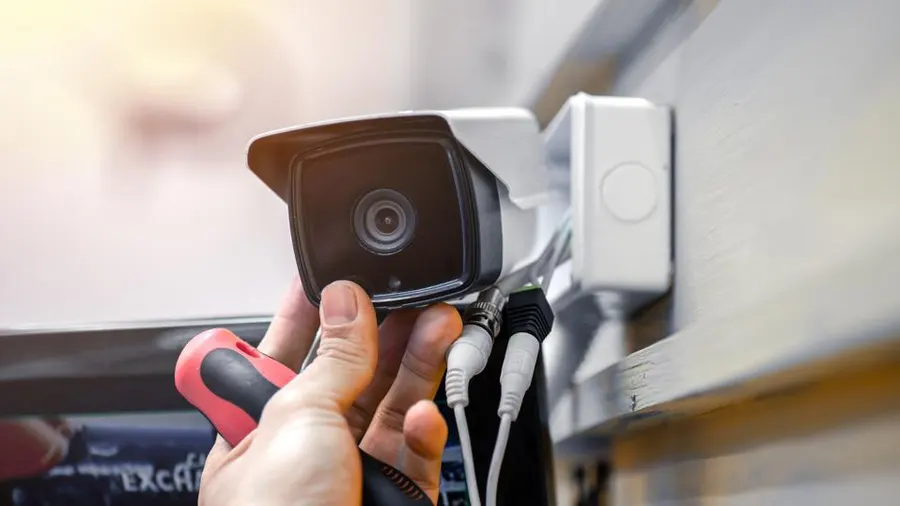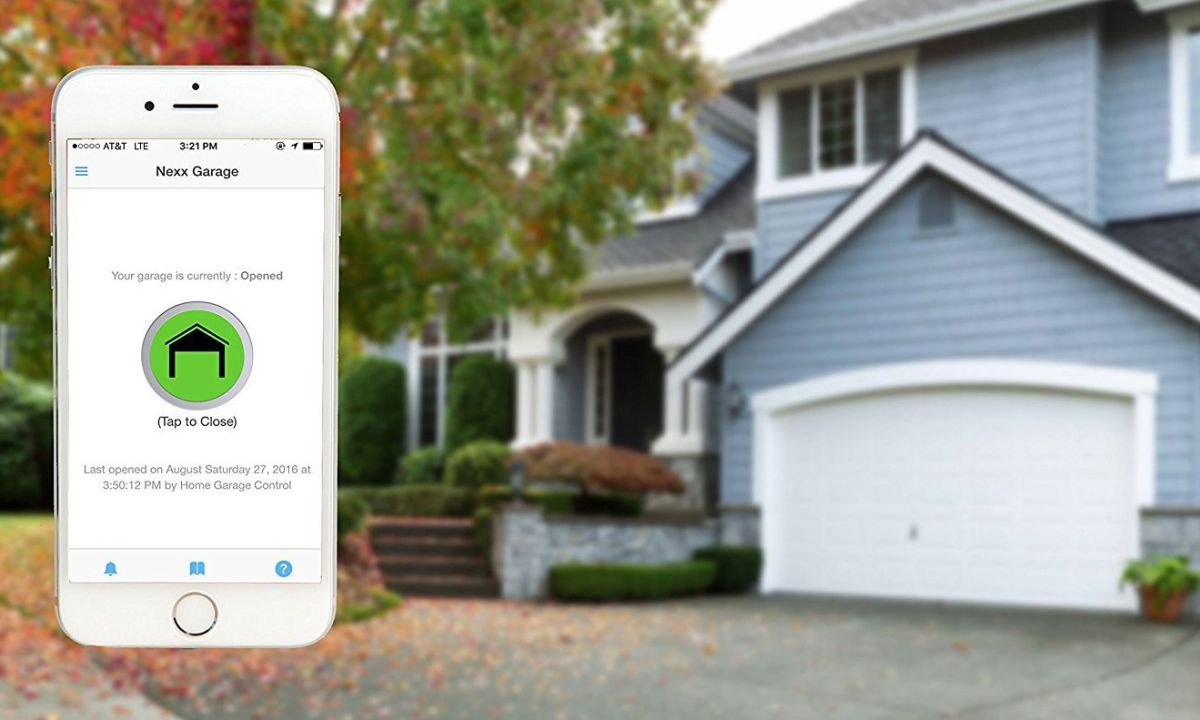Contents
- 0.1 The Importance of Protecting Your Home From Fire
- 0.2 The Importance of Protecting Your Home From Floods
- 0.3 The Importance of Protecting Your Home From Carbon Monoxide Poisoning
- 0.4 Conclusion
- 1 Protecting Your Home from Fire
- 2 Protecting Your Home from Floods
- 3 Protecting Your Home from Carbon Monoxide Poisoning
- 4 Additional Tips for Home Protection
- 5 Conclusion
Home is where we feel safe and comfortable, and it is our responsibility to ensure that our families and loved ones are protected from any sort of danger. There are several threats that your home could face such as fire, flood, and carbon monoxide poisoning. These threats could potentially cause serious damage to your property or even prove fatal for the occupants.
In this article, we will discuss ways to protect your home from fire, flood, and carbon monoxide so that you can keep yourself and your family safe. While these dangers are very different in nature, they all require a proactive approach in order to ensure safety.
The Importance of Protecting Your Home From Fire
Fires can be incredibly destructive and dangerous for anyone trapped inside. According to the National Fire Protection Association (NFPA), firefighters responded to roughly 1.3 million fires in the United States alone in 2018.
Fires can occur due to many different reasons such as electrical faults, cooking accidents or even arson. The best defense against fire is prevention.
Installing smoke detectors on every level of your home is key — these life-saving devices will give you an early warning if there’s a fire before it’s too late. Make sure they’re properly installed according to manufacturer instructions and tested regularly.
Creating a fire escape plan with your family can also save lives. Practice this plan with everyone who lives in the house so that everyone knows what they should do if there’s a fire — including which exits to use and where everyone should meet once outside.
It’s also important to keep flammable materials away from heat sources such as candles or stoves. Ensure that all heating appliances are placed on a sturdy surface away from items like curtains or bedding which could easily catch alight.
The Importance of Protecting Your Home From Floods
Flooding can cause significant damage to homes especially if it’s not caught quickly enough, so it is important to take necessary precautions to protect your home. Flooding can occur due to heavy rainfall, burst pipes, and even poor drainage in the area.
Checking for leaks in pipes and roofs can prevent damage to your house caused by water. If you notice any leaks, get them fixed immediately.
Elevating appliances and furniture in flood-prone areas or basements is also advisable. This simple measure will help prevent water damage from a flood.
Another way to protect your home from a flood is by installing a sump pump which will remove any excess water from the building. Make sure that the pump is cleaned and inspected regularly to keep it working properly.
The Importance of Protecting Your Home From Carbon Monoxide Poisoning
Carbon monoxide (CO) poisoning is another potential danger that homeowners should be aware of. CO is an odorless gas that can be deadly if breathed in large quantities.
It’s produced when fossil fuels such as gas or oil are burned without sufficient ventilation. Installing carbon monoxide detectors on every level of your home can warn you if there’s a buildup of this dangerous gas in your living space.
Make sure they’re tested regularly and have fresh batteries installed at least once a year. It’s also important to check fuel-burning appliances such as heaters, stoves, or boilers regularly so they don’t produce dangerous levels of CO. Finally, ensure that gas appliances are properly ventilated so that any CO released dissipates safely into the atmosphere.
Conclusion
Fire, flood, and carbon monoxide poisoning are serious threats that require constant vigilance in order to protect yourself and your loved ones from harm. We hope this article has given you some guidance on how best to prepare for these dangers so you’re ready if an emergency strikes. Remember: prevention is key!
Protecting Your Home from Fire
Installing Smoke Detectors and Fire Alarms
Smoke detectors and fire alarms are crucial in protecting your home from fires. They detect smoke and heat, alerting you to danger before it’s too late. Make sure you have a smoke detector installed on every level of your home, especially in or near bedrooms.
Test them regularly to ensure they are working properly and replace their batteries at least once a year. Consider investing in a smart smoke detector that can send alerts to your phone if it detects smoke or fire.
This will give you an extra layer of protection even when you’re not at home. Additionally, some insurance companies offer discounts for having smoke detectors installed, so check with your provider to see if you qualify.
Creating a Fire Escape Plan for Your Family
It’s important to have a fire escape plan in place for your family in case of emergency. Sit down with your household members and discuss the best ways to escape the house if there is a fire. Identify two exits from each room, making sure windows are easily accessible.
Practice this plan periodically with your family so everyone is familiar with what to do in case of an emergency. Designate someone responsible for helping pets or young children escape safely.
Keeping Flammable Materials Away from Heat Sources
Flammable materials like curtains, paper towels, cleaning supplies, and even furniture can easily ignite when exposed to heat sources like space heaters or stovetops. To prevent fires from starting, keep flammable materials away from heat sources by ensuring there is enough space between them.
Additionally, avoid storing flammable liquids like gasoline or propane inside the house as these can be highly combustible when exposed to heat sources. Keep these materials stored outside in a safe location.
Protecting your home from fire is an essential part of home safety. Installing smoke detectors and fire alarms, creating a fire escape plan, and keeping flammable materials away from heat sources are just a few things you can do to protect your family and home from fire damage. Remember to practice your escape plan periodically with your household members, test smoke detectors regularly, and take necessary precautions to ensure that your home is as safe as possible.
Protecting Your Home from Floods
Checking for Leaks in Pipes and Roofs
When it comes to protecting your home from floods, one of the most important things you can do is to regularly check for leaks in your pipes and roof. Even a small leak can quickly turn into a big problem when it comes to flood damage. Check your pipes and roof at least once a year, especially before the rainy season begins.
If you spot any leaks or signs of damage, like water stains or warped wood, have them repaired immediately. Another way to prevent leaks is by keeping an eye on your water bill.
A sudden increase in water usage could be a sign of a hidden leak somewhere in your home. You may also want to consider investing in a smart water sensor that can alert you if there’s excess moisture in areas where it shouldn’t be.
Elevating Appliances and Furniture in Flood-Prone Areas
If you live in an area that’s prone to flooding, consider elevating appliances and furniture that are close to the ground. This will help prevent damage if floodwater enters your home.
For example, put washing machines and dryers on cinder blocks or other raised platforms so they’re not sitting directly on the ground. Move couches and chairs onto higher floors if possible.
You may also want to invest in waterproof containers for valuables such as documents, photos, and electronics. This way, if floodwater does enter your home, you can rest easy knowing that these important items are protected.
Installing a Sump Pump to Prevent Water Damage
A sump pump is an essential tool for protecting your home from flood damage. It’s designed specifically to remove excess water from basements or crawl spaces before it has a chance to cause damage. To install a sump pump properly, start by digging a hole in your basement or crawl space deep enough to hold the sump pump basin.
Place the pump in the hole and connect it to a drainage pipe that leads outside. Install a check valve on the discharge line to prevent water from flowing back into your basement or crawl space.
Be sure to test your sump pump regularly by pouring water into the basin and making sure it pumps water out properly. You don’t want to wait until it’s too late to find out your sump pump isn’t working correctly.
Protecting Your Home from Carbon Monoxide Poisoning
Installing carbon monoxide detectors on every level of your home
Carbon monoxide is a colorless, odorless gas that can be deadly if inhaled in high concentrations. The only way to detect it is by installing carbon monoxide detectors throughout your home.
These detectors should be placed on every level of the house, including the basement and any sleeping areas. It’s also important to test the detectors regularly to make sure they’re working properly.
When installing carbon monoxide detectors, make sure to follow the manufacturer’s instructions and place them at least five feet above the ground. This will ensure that they’re able to detect any carbon monoxide that may be present in the air.
Checking fuel-burning appliances regularly
Carbon monoxide is often produced by fuel-burning appliances such as furnaces, water heaters, and stoves. To prevent carbon monoxide poisoning, it’s important to have these appliances checked regularly by a professional.
During a routine maintenance check, a technician can inspect the appliance for any signs of damage or wear that could lead to a carbon monoxide leak. They’ll also check for proper ventilation and make sure that all connections are secure.
Properly ventilating gas appliances
If you have gas appliances in your home, it’s important to make sure they’re properly ventilated. Gas stoves and ovens should always be used with an overhead vent fan or open window nearby to allow for proper ventilation.
Gas furnaces and water heaters should also be properly vented outside of your home. If you suspect there may be an issue with the ventilation system for one of these appliances, contact a professional immediately.
Conclusion
Protecting your home from carbon monoxide poisoning is essential for keeping your family safe. By installing carbon monoxide detectors, checking your fuel-burning appliances regularly, and properly ventilating your gas appliances, you can greatly reduce the risk of carbon monoxide exposure in your home. Don’t wait until it’s too late – take these steps to protect your family today.
Additional Tips for Home Protection
Keeping a Fire Extinguisher on Hand: Be Prepared for Emergencies
One of the most important things you can do to protect your home from fire is to keep a fire extinguisher on hand. A small, portable fire extinguisher can be purchased at most hardware stores and should be stored in an easily accessible location.
Make sure everyone in your household knows where the extinguisher is kept and how to use it. It’s also important to make sure that the type of fire extinguisher you have is appropriate for your home.
There are different types of extinguishers for different types of fires, such as Class A (wood, paper, cloth), Class B (flammable liquids), and Class C (electrical). Make sure you have the correct type of extinguisher for your needs.
Remember that a fire extinguisher is just one tool in your arsenal against fire. Be sure to have working smoke detectors and an established escape plan in case of emergency.
Regularly Cleaning Gutters: Preventing Water Damage
Cleaning gutters may not be the most glamorous task on your to-do list, but it’s essential in protecting your home from water damage caused by clogged gutters or downspouts. Water that cannot flow away properly can cause damage to roofs, walls and foundations. Ideally, you should clean your gutters twice a year – once in the spring and once in the fall – but if you live near trees or experience heavy storms regularly, more frequent cleanings may be necessary.
Use gloves and a scoop to remove debris from gutters and downspouts. In addition to cleaning gutters regularly, consider installing gutter guards or screens that help prevent leaves and debris from accumulating within them.
Having an Emergency Kit Ready: Be Prepared for Any Disaster
While we hope that we’ll never have to use an emergency kit, it’s important to have one on hand in case disaster strikes. Your emergency kit should include enough supplies for each person in your household for at least three days.
Some essential items to include in your emergency kit are non-perishable food, bottled water, a first-aid kit, flashlights with extra batteries, a radio or other communication device and a whistle. Also consider including copies of important documents such as insurance policies and identification.
Keep your emergency kit stored in an easily accessible location and make sure everyone in your household knows where it is kept. Review the contents of the kit annually and replace any expired items or supplies that have been used.
Conclusion: Stay Safe with These Home Protection Tips
Protecting your home from fire, flood and carbon monoxide requires taking proactive steps to be prepared for emergencies. Keep a fire extinguisher on hand, regularly clean gutters and downspouts, and have an emergency kit ready in case disaster strikes.
By implementing these additional tips for home protection along with installing smoke detectors & fire alarms; creating a fire escape plan; checking for leaks; elevating appliances & furniture; installing sump pump; installing carbon monoxide detectors on every level of home; checking fuel-burning appliances regularly & properly ventilating gas appliances you can feel confident that you’ve done everything possible to protect yourself and your loved ones from harm. Remember: being prepared is key!
Conclusion
Whether it’s a fire, flood or carbon monoxide poisoning, there are several ways to protect your home from these dangers. In this article, we discussed the importance of installing smoke detectors and fire alarms, creating a fire escape plan for your family, keeping flammable materials away from heat sources and checking for leaks in pipes and roofs to prevent water damage. We also talked about the importance of installing carbon monoxide detectors on every level of your home, checking fuel-burning appliances regularly and properly ventilating gas appliances.
It’s important to remember that taking these necessary steps can not only protect your home but also save lives. According to the National Fire Protection Association (NFPA), three out of five fire deaths occur in homes without working smoke detectors.
Additionally, floods can cause significant damage to homes and disrupt families for months. Taking preventive measures can reduce damages caused by these dangers.
We understand that protecting your home can be overwhelming; however, investing time and money upfront to put preventative measures in place will save you both time and money in the long run. By taking steps like keeping a fire extinguisher on hand; cleaning gutters regularly; elevating appliances and furniture in flood-prone areas; having an emergency kit ready in case of disasters; among others will give you peace of mind knowing that you have taken all necessary precautions.
Protecting your home from fires, floods or carbon monoxide poisoning is essential. With a little effort and care as outlined above – which are just some examples- you can ensure that your family is safe from these dangers by taking the necessary steps today!

